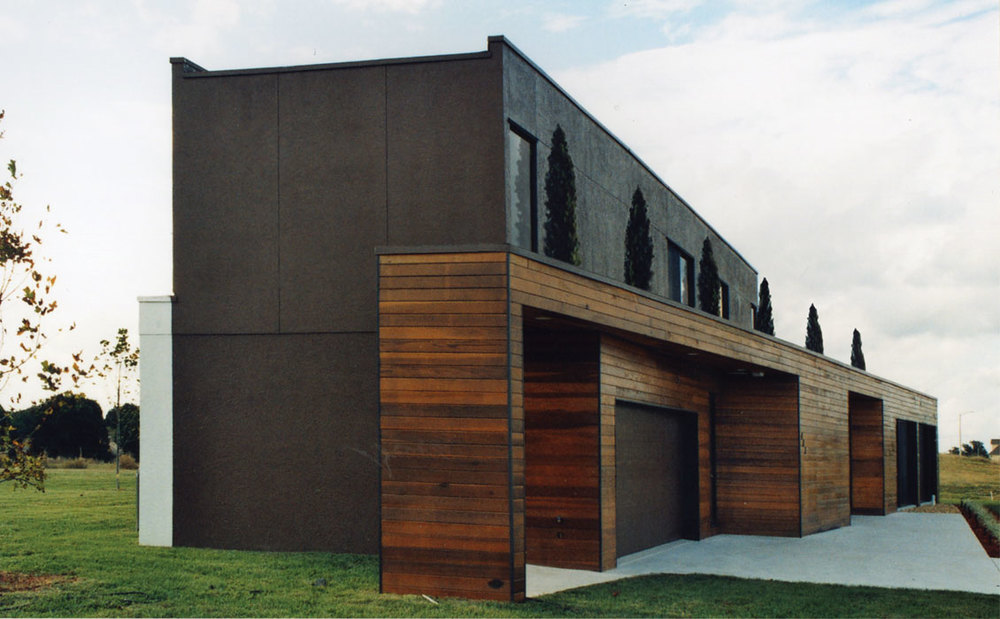This is a lakefront home located in Lake Placid [Florida], completed in March 2009. It is the first modern non-speculative house to be certified “Green” by the Florida Green Building Coalition.
The clarity, the color and shape of the lake and sky, the orange grove and the sand of the site itself are seen as dynamic entities, which adjust and interact with one another. The three volumes reflect the sharp differences of these entities, and appear to slide along with a shifting Nature.
Architect: Antonio Di Oronzo
Country: United States

Given the low budget available [$100/SF], the ecological approach to the design of this house was mainly based on natural and established techniques used in Florida before air conditioning became mainstream. An extensive study of vernacular architecture was conducted, and simple and effective methods of cooling were extrapolated. The overall shape of this house is elongated and oriented to maximize use of daylight. The floor plans are organized to take advantage of cross ventilation. Further, a slim double height above the dining area works as a solar chimney, and allows for warm air to ascend and be dispersed through the aligned skylight above. Deciduous trees were planted to shade the building on its south-east side, and drought-resistant sod was laid. The cypress trees were used to counterpoint the horizontality of the architecture.

The home features a 15-SEER [Seasonal Energy Efficiency Ratio] rated HVAC; among the most efficient residential HVAC systems available. Additionally, MERV 10 filters were installed in the return air grill. Use of air conditioning is also minimized through the use of fans in each room. Where applicable, all Energy Star appliances and light bulbs were installed. All faucets have aerators, and the toilets and the shower heads are “low flush” to save water. All paint is low-VOC, and all other finishes are ecologically sound.

With a budget of $100 per square-foot, this 3,200SF, 3-bedroom house transcends the upscale setting of the gated lakefront community, by demonstrating that being environmentally sound does not necessarily mean expensive.
Prev Post
Pelican Residence | Malcolm Davis Architecture
3 Mins Read
Next Post
The Gentle House | V-Architecture Jsc.
3 Mins Read





